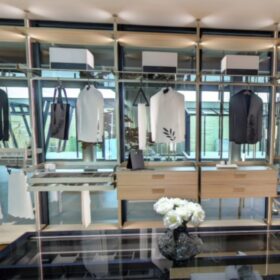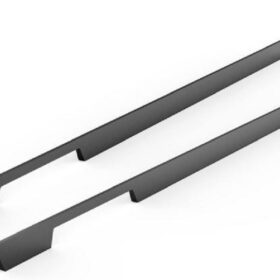Eco-Friendly Practices with Curtain Wall Aluminum Sections
Advancing Sustainability in the Built Environment
In the realm of modern architecture, sustainability has emerged as a cornerstone principle. Curtain wall systems, ubiquitous in skyscrapers and commercial buildings, offer a significant opportunity for eco-friendly practices. By utilizing aluminum sections, architects and builders can harness the inherent benefits of this lightweight, recyclable metal while contributing to environmental conservation.
Lightweight Strength and Durability
Aluminum is renowned for its exceptional strength-to-weight ratio. Curtain wall aluminum sections provide unparalleled structural integrity while minimizing dead load. This reduced weight translates into energy savings during transportation, installation, and building operation.
Infinite Recyclability
Aluminum is infinitely recyclable without compromising its properties. Curtain wall systems fabricated with aluminum sections can be easily disassembled and repurposed, preventing waste and conserving natural resources. This closed-loop recycling process significantly reduces the environmental impact associated with building materials.
Improved Thermal Performance
The thermal conductivity of aluminum can be tailored through advanced manufacturing techniques. Curtain wall systems incorporating thermally broken aluminum sections minimize heat transfer, reducing energy consumption for heating and cooling. This improved thermal performance contributes to energy efficiency and a more sustainable indoor environment.
Enhanced Daylight Harvesting
By integrating aluminum sections with glazing, curtain wall systems can optimize natural daylighting. This passive solar design approach reduces the need for artificial lighting, conserving energy while enhancing occupant well-being.
Implementation Strategies
To fully capitalize on the eco-friendly benefits of curtain wall aluminum sections, architects and builders must embrace innovative practices. These include:
Life Cycle Assessment (LCA): Conducting LCA studies to quantify the environmental impacts of curtain wall systems, ensuring sustainability throughout the entire building life cycle.
Cradle-to-Cradle Design: Adopting the cradle-to-cradle approach, where materials are designed for reuse and recycling, minimizing waste and maximizing resource utilization.
Green Building Certifications: Seeking certifications such as LEED or BREEAM, which recognize and reward buildings that incorporate eco-friendly practices.
Conclusion
By harnessing the power of curtain wall aluminum sections, the built environment can embrace sustainability without sacrificing aesthetics or performance. Through lightweight strength, infinite recyclability, improved thermal performance, and enhanced daylight harvesting, these aluminum sections contribute to a greener, more sustainable future for our cities and buildings.
-
2024-11-29Top Trends in Modern Kitchen Cabinet Pulls for 2024
-
2024-11-28The Ultimate Guide to Modern Kitchen Cabinet Pulls- Materials, Styles, and Tips
-
2024-11-27Elevate Your Kitchen Design with These Must-Have Modern Cabinet Pulls
-
2024-11-26Sleek and Stylish- The Best Modern Kitchen Cabinet Pulls for a Contemporary Look










